THE WORKS OF ERNEST HEMINGWAY
1923:Three Stories and Ten Poems, published privately by a small press in Paris.
1924:in our time, another small book privately published in Paris.
1925:In Our Time, Hemingways first publication by a major American house.
1926:The Torrents of Spring, Hemingways burlesque of Sherwood Anderson; the book Hemingway used to break his contract with Boni and Liveright and sign on with Scribners.
The Sun Also Rises (British title: Fiesta), Hemingways first novel and first great popular success.
1927:Men Without Women, a collection of short stories.
1929:A Farewell to Arms, Hemingways second novel; the book that consolidated his reputation as one of Americas best young writers.
1932:Death in the Afternoon, Hemingways book-length study of the bullfight.
1933:Winner Take Nothing, another collection of short stories.
1935:Green Hills of Africa, Hemingways nonfiction novel telling the story of his first safari.
1937:To Have and Have Not, Hemingways third novel; the only one of his novels to be set on American soil.
1938:The Fifth Column and the First Forty-Nine Stories, Hemingways only play along with the first collected edition of his short stories.
1940:For Whom the Bell Tolls, Hemingways long novel of the Spanish Civil War; the book that made him rich.
1950:Across the River and into the Trees, Hemingways fifth novel; generally considered his worst performance.
1952:The Old Man and the Sea, Hemingways novella, which sold millions of copies in Life magazine and was equally successful as a book. This novella consolidated the opinion of the Nobel Prize committee.
1962:The Wild Years, a collection of Hemingways very early journalism. Note: this book is not listed on the official publications list in the Scribners editions of Hemingways works. Published posthumously.
1964:A Moveable Feast, Hemingways sketches of life and struggle in Paris early in his career. Published posthumously.
1967:By-Line: Ernest Hemingway, journalism from throughout Hemingways career. Published posthumously.
1969:The Fifth Column and Four Stories of the Spanish Civil War, a new edition of Hemingways play along with four previously uncollected short stories. Published posthumously.
1970:Islands in the Stream, Hemingways novel of the sea. Published posthumously.
1972:The Nick Adams Stories, a collection in chronological order with a variety of unpublished Adams material. Published posthumously.
1981:Ernest Hemingway: Selected Letters, 1917-1961, a huge collection of correspondence assembled by Dr. Carlos Baker. Published posthumously.
ERNEST
HEMINGWAY
M. Evans
An imprint of The Rowman & Littlefield Publishing Group, Inc.
4501 Forbes Boulevard, Suite 200, Lanham, Maryland 20706
http://www.rlpgtrade.com
10 Thornbury Road, Plymouth PL6 7PP, United Kingdom
Distributed by National Book Network
Copyright 1984 Keith Ferrell
First Rowman & Littlefield paperback edition 2014
All rights reserved. No part of this book may be reproduced in any form or by any electronic or mechanical means, including information storage and retrieval systems, without written permission from the publisher, except by a reviewer who may quote passages in a review.
British Library Cataloguing in Publication Information Available
Library of Congress Cataloging-in-Publication Data Available
ISBN 13: 978-1-59077-352-9 (pbk: alk. paper)
 The paper used in this publication meets the minimum requirements of American National Standard for Information SciencesPermanence of Paper for Printed Library Materials, ANSI/NISO Z39.48-1992.
The paper used in this publication meets the minimum requirements of American National Standard for Information SciencesPermanence of Paper for Printed Library Materials, ANSI/NISO Z39.48-1992.
Printed in the United States of America
Design by Diane Gedymin
FOR HARRY W. SPARROW, M. D.
ONE FRAID A NOTHING!
LIKE HIS FATHER, ERNEST HEMINGWAY always felt more at home in wilderness than in cities. The outdoors beckoned to him and even as a child he could not ignore its call. The trees and skies were filled with birds whose names he learned at an early age. The countryside bristled with wildlife that he learned to stalk and kill and dress out as meat for the table. A Swiftly flowing stream was irresistible: there might be trout in it. And if not, it was still a stream, outside, away.
Ernests father, Dr. Clarence Edmonds Hemingway, was a physician, a good one. He was also a dedicated outdoorsman who brought to the campsite the same discipline, sense of order, and methodical attention to detail that surgery demanded. His fishing and hunting companions looked to Ed Hemingway for instruction and example in the correct approach to setting up camp, finding good fishing spots, and living off the land. Ed Hemingway never failed and often delighted them.
He was a natural leader, a man of imposing presence, proud of his skills but modest about them. He would not show off or boast, preferring to use his abilities quietly and for the benefit of others. On one college camping trip, with food running short, he prepared a fresh blackberry pie from wild ingredients, using only rudimentary utensils. He located his own berries. He filled his hat with damp leaves, set them smoldering, and used the improvised smokepot to stun a hive of bees long enough to steal their honey. Though he had no use for alcoholic beverages, he put an empty beer bottle to good purpose as a rolling pin, with a stripped log serving as his mixing board. The pie was baked beside the campfire, using an old piece of sheet metal to reflect heat. When the perfect pie was presented, Dr. Hemingway shrugged off his friends praise. Every step had been accomplished efficiently and correctly. Anyone who would take the time could do what he had done. There was a right way and a wrong way of going about any endeavor, and Ed Hemingway made a point of always knowing the right way.
He was a man who did many things well, and he began acquiring his array of skills while young. Born in 1871, he was both athletic and studious as a boy. He enjoyed playing ball, but he was also a dedicated and careful observer of nature. He collected and catalogued Indian artifacts, and spent much of his free time roaming the burial mounds along the Des Plaines River outside Chicago. His hometown, Oak Park, was the most genteel of Chicago suburbs, but even so, when Ed Hemingway was young there was still a sense of the frontier about the town. Oak Park was surrounded by rolling hills, and wild chickens often wandered through the streets. Chicago was near, but so was wilderness. It was a wonderful place to grow up.
Occasionally there were problems. Ed Hemingways parents instilled very strict codes of behavior in their children, and would tolerate no deviation from those codes. Once a group of bullies chased Ed into his own kitchen and proceeded to beat him badly while his mother stood watching, reminding her son of the virtue of turning the other cheek. The horror of that beating stayed with Ed Hemingway forever, and he had a lifelong hatred of physical violence.
The Hemingway family was wealthy, but Eds parents respected the value of education, and along with their religious beliefs and moral convictions they passed on to their children a love of learning. Ed earned good grades in school, attended Oberlin College, and graduated at twenty-three from the medical college of the University of Chicago. He spent his internship in Scotland, at the University of Edinburgh. The Hemingways fortunes had improved over the years, and when their son returned to Oak Park he opened his practice in their new home at 444 North Oak Park Avenue.



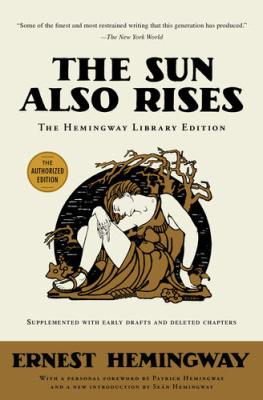
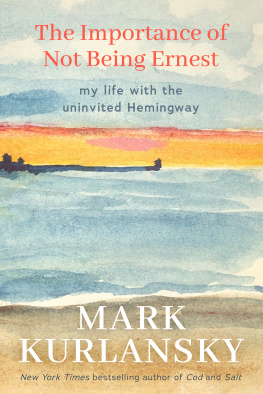
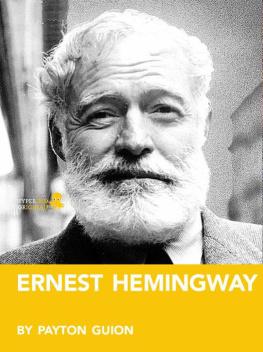
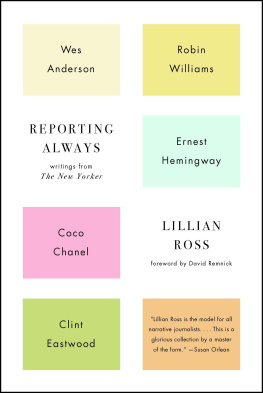
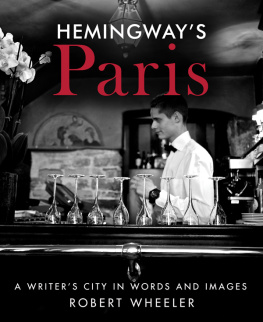
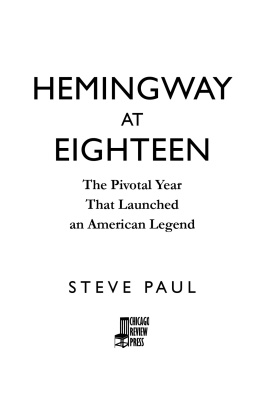


 The paper used in this publication meets the minimum requirements of American National Standard for Information SciencesPermanence of Paper for Printed Library Materials, ANSI/NISO Z39.48-1992.
The paper used in this publication meets the minimum requirements of American National Standard for Information SciencesPermanence of Paper for Printed Library Materials, ANSI/NISO Z39.48-1992.